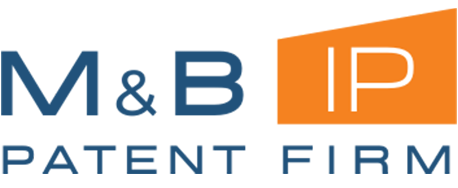- April 29, 2020
- Posted by: mbipuser
- Category: Ip Topics

A patent grant affords certain legal protections which can increase the value of an invention. Generally, a patent provides a twenty-year monopoly period, during which the inventor, or another party who has rights to the patent (also known as the “assignee”), can exclude others from making, using, or selling the patented invention. As a patent grant can provide exclusive security, inventors should consider filing for patent protection with the assistance of an experienced patent agent or attorney. The patent process can appear daunting, particularly for recent entrepreneurs and start-up businesses. The tips identified in this article may serve to introduce inventors, entrepreneurs, and other parties unfamiliar with patent practice, to the advantages of professional patent prosecution and maintenance. Below are several key questions to consider in preparing your invention for the patent process.
1 . Is your idea novel? – In the United States, and in many other countries, the patent applicant is required to show that the invention is novel. Under U.S. law, the determination of whether an invention is novel turns on whether the invention was previously disclosed to the public, with certain exceptions. Although making a groundbreaking discovery can be thrilling, rushing to disclose your invention to the public can put your idea, and your business, at risk. This risk may be amplified for startups and small businesses which stake future success on the grant of a patent. When working with your patent agent or attorney, be sure to provide information about previous publications, sales, or other disclosures of your invention, as this information may be useful in determining patent eligibility.
2 . Has the invention been reduced to practice? – When multiple inventors file for patent protection for the same or similar inventions, the respective inventive timelines may be compared to determine which inventor will receive the patent grant. While the 2013 America Invents Act shifted the critical date in such determinations from the date of invention to the date of filing, knowing the inventive timeline may still be useful in securing patent protection.
As many aspects of the patent process are time-sensitive, knowing the dates of important development milestones may support efficient patent prosecution. Knowledge of the dates on which an invention was first conceived, and the dates on which the invention was constructed, used, or otherwise reduced to practice, may be useful in securing and maintaining robust patent protection. When working with your patent professional, be sure to provide detailed descriptions and records of your inventive process and timeframe to achieve the best results.
3 . What is the market for the invention? – Certain inventions may be better-suited to particular forms of protection. Where an invention can be closely-guarded, a form of intellectual property (IP) protection known as a “trade secret” may be appropriate. Examples of inventions which are well-suited to trade secret protection include recipes for soft drinks and seasoning blends, secrets which cannot be reverse-engineered.
However, if an invention can be disassembled and inspected, selling the product on the market may allow a competitor to reverse-engineer the invention. To secure protection against sales of reverse-engineered products, a patent grant may be obtained. The patent grant may be particularly valuable to startups and small businesses seeking to commercialize a breakthrough product in an uncertain market. While patents and trade secrets may be similar, securing the appropriate protection can provide invaluable security for your invention. Work with your patent agent or attorney to determine which type of IP protection best suits your needs.
4 . What are the costs involved in securing patent protection? – In addition to the research, manufacturing, and other costs associated with bringing a product to market, securing patent protection should be considered in budgeting for a new project. U.S. patent law requires the payment of certain fees to file an application and maintain a patent grant. Certain lean organizations and small businesses may be cost-sensitive and may view patent protection as prohibitively expensive. Fortunately, reduced fee schedules may be available for certain inventors and organizations, and investors may appreciate the value that a patent grant adds to your invention. Working closely with your patent professional allows for a better understanding of the necessary fees, as well as any reductions which may be available.
5 . Who is the real owner? – Many corporations, universities, and other organizations require an assignment of some or all of an inventor’s interest in a patented invention. While assignment agreements may reduce an inventor’s ownership interest in a patented invention, the same agreements may provide for fee-shifting or other cost reductions, saving an inventor certain out-of-pocket expenses. By working with your company, university, or organization to understand your assignment obligations, you, and your patent professional, can secure IP protection which benefits both inventors and interested parties.
Filing for patent protection can be daunting. By working with a licensed patent agent or attorney, inventors may be able to secure valuable rights to their inventions. To learn more about securing patent protection, please contact M&B IP at (973) 712-5424, or at www.mb-ip.com.
